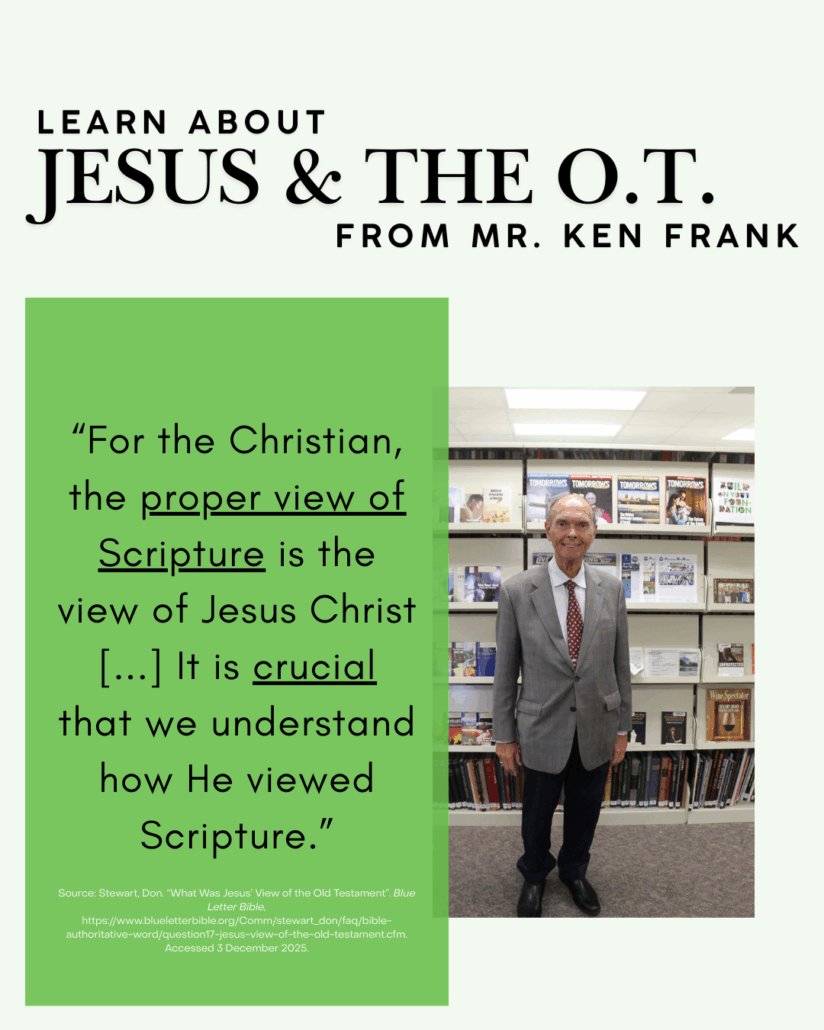Mr. Lawdi Ferreira: Emotional Maturity and Resilience
Author: David Markopoulos | Living Education
These summaries are written to give our audience an idea of the special forum messages our students have access to as part of the Living Education-Charlotte program.
Mr. Lawdi Ferreira is a pastor serving the Church in South Africa. In a recent forum, he began by asking the Living Education students a question: “How mature are you?”
Just like an intelligence quotient—our IQ—we also have an EQ: our emotional intelligence. As we grow from childhood to adulthood, not only do we grow physically, but we must learn to grow in mental, spiritual, and emotional maturity. Mr. Ferreira pointed out that since God has given us the capacity for a wide range of emotions, He also intends for us to regulate those emotions and develop maturity. Those who embody emotional maturity are able to be resilient in the face of life’s challenges. Learning these skills is essential as we strive toward our future in the Kingdom of God. Mr. Ferreira gave important points to consider and steps to develop emotional maturity and resilience.
What is Emotional Intelligence?
The Oxford Dictionary defines “emotional intelligence” as: “The capacity to be aware of, control, and express one’s emotions, and to handle interpersonal relationships sensibly and kindly.” Not only does emotional intelligence involve managing our own emotions, it also means recognizing and relating to the emotions of others. This is an important skill that can be developed over time with consistent effort.
Mr. Ferreira clarified an important distinction: emotional intelligence can be described as the skill of being able to identify, understand, and manage emotions; by contrast, emotional maturity is the result of exercising emotional intelligence. It is how you live and behave as a result of exercising these skills.
Resilience
Related to emotional intelligence is the trait of resilience. The Oxford Dictionary defines “resilience” as: “The capacity to recover quickly from difficulties, negative and hurtful situations.” Mr. Ferreira compared resilience to a metal spring—a metal spring can undergo intense pressure, but can bounce back to its original shape. As we exercise emotional intelligence in regulating those emotions, we develop the ability to handle difficult and distressing situations without breaking. This means not shying away from challenges, but adapting, facing the pressure, and doing hard things anyway. The lessons we learn from choosing to be resilient in the face of pressure help us develop the character that God is looking for in the Kingdom. Resilience can be compared to a muscle that becomes stronger over time—not by avoiding pain, but working through it.
Do Hard Things
Learning to develop resilience is crucial in our lives. Life will always throw challenges at us, and we have to be prepared. As Jesus’ return comes closer, the difficulties we face will become harder. If we have developed the trait of resilience, we’re choosing to stay strong in the face of adversity.
Life is full of change. Adulthood presents many challenges, uncertainty, and disappointments. Our jobs, finances, families, and friends present many opportunities for uncertainty. James 4:13-15 states: “Come now, you who say, ‘Today or tomorrow we will go to such and such a city, spend a year there, buy and sell, and make a profit’; whereas you do not know what will happen tomorrow. For what is your life? It is even a vapor that appears for a little time and then vanishes away. Instead you ought to say, ‘If the Lord wills, we shall live and do this or that.’” Our plans often change. How will we respond when hardships come our way? We need to recognize our emotions, choose to take control of them, and try our hardest to bounce back in spite of them. This is one of the most important skills we can develop. It isn’t always easy, but can be learned over time.
You Have a Choice
When was the last time you got extremely upset? Something a friend said, a driver on the road, a stressful situation you couldn’t control, or something that someone did to you—these situations happen from time to time. Imagine how you felt in that situation—imagine how you would use the skill of emotional intelligence if you were to experience it over again. We have the choice of being reactionary, complaining, and letting it ruin our day—maybe even our week. But we also have the choice not letting our emotions get the better of us and letting it go. This is actually a principle of showing love to our neighbor by not holding grudges.
In life, we need to learn to counter our human nature—our initial reactions are what get us into trouble. When we face crises, uncertainty, hardships, offenses, and hard days, we have to recognize our emotions for what they are, avoid going to extremes, and learn to roll with the punches. Our spiritual and mental health depend highly on our ability to exercise emotional intelligence when things go wrong. The Fruit of the Spirit in Galatians 5 outlines a picture of the kind of person who embodies this intelligence. When we fall short, we must hold ourselves to the standard of a Christian who maintains control of their emotions.
Be Emotionally Mature!
In life, we need to be checking our EQ. Emotional intelligence arms us with the tools to deal with difficult situations. We can learn to exercise emotional intelligence and grow in maturity, learning to become resilient in the face of life’s challenges. As spiritual babes in Christ, we must learn to have a healthy outlook on life, regulating our reactions and relating with kindness and tact to others. As we develop these traits, we can be cool, calm, and patient when things go wrong.
2 Timothy 1:6-7 states: “Therefore I remind you to stir up the gift of God which is in you through the laying on of my hands. For God has not given us a spirit of fear, but of power and of love and of a sound mind.” God promises that when we fall short, He will pick us up. We don’t have to be emotionally dysregulated, but can tap into the gift of God’s spirit to help us stay spiritually strong. We have a responsibility before God to do our best to develop a healthy outlook on our emotions. The next time life throws you a curveball, remember that you have the tools available with God’s help to develop a strong sense of emotional maturity.

David Markopoulos is a Living Education alumnus from the 2023-2025 school years. Originally hailing from Chicago, he currently works for the Living Education program.







